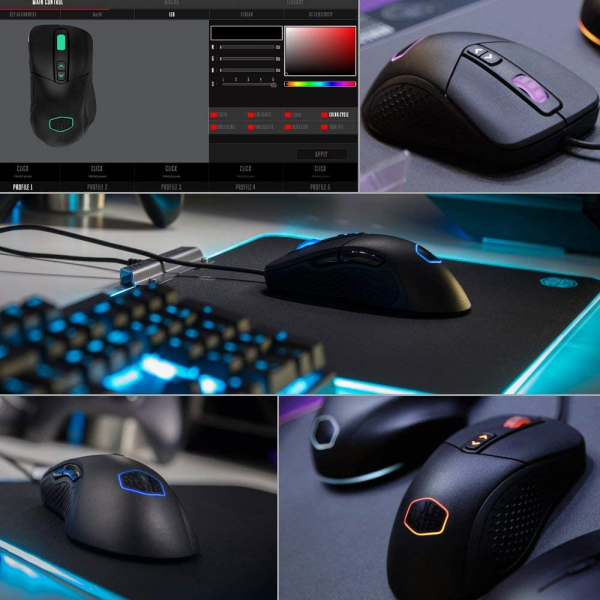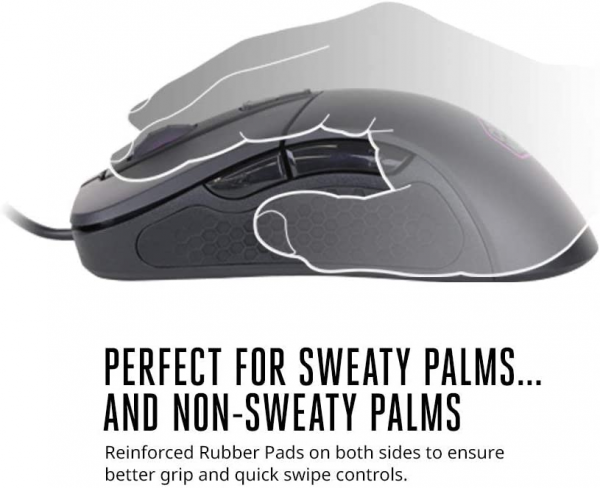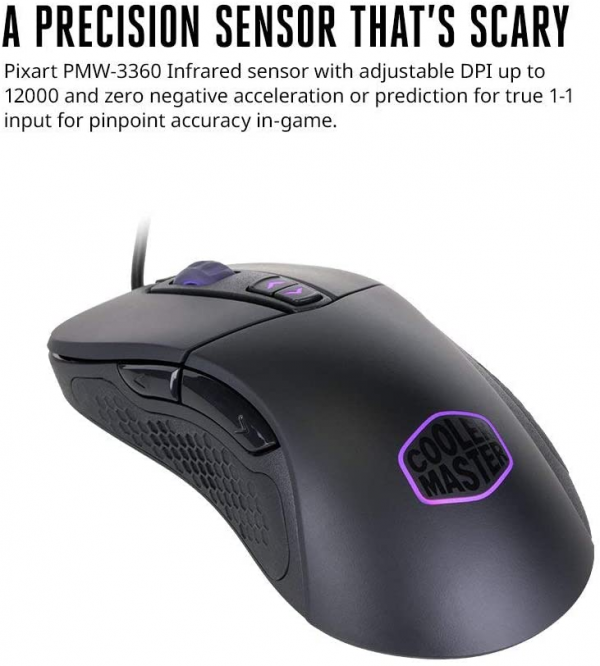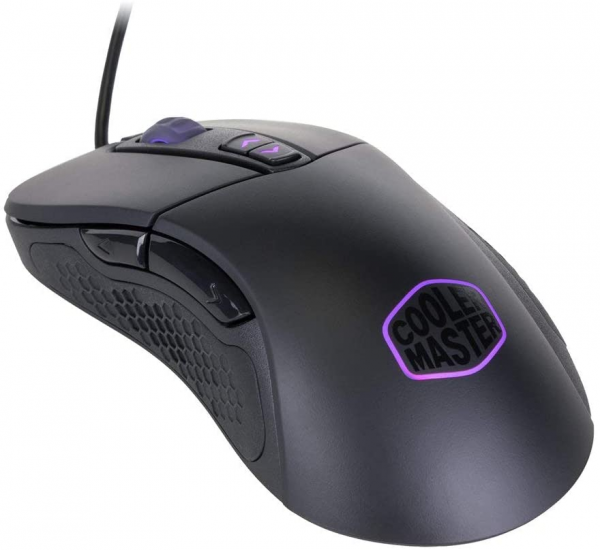Cooler Master
Mouse Cooler Master MM530: speed and precision at full hand
Aprox. 49€
See specificationsIn 2017, Cooler Master launched its MasterMouse series, composed of classic but well-designed mice. A year later, the manufacturer dares to use a slightly less conventional form, notably aimed at comfort in handling. If the MM520 recently tested is thus rather doomed to use in claw or fingertips, the MM530, it, is intended preferably for a palm grip, bringing in principle more relaxation. So let's see what our hand says.
Positive points
Excellent optical sensor.
Comfortable grip.
Non-slip edges.
Resistant PBT shell.
Bad points
No horizontal scrolling of the wheel.
Slight play in the switches of the edge buttons.
Backlight transitions may be smoother.
Our review
Ergonomics
Unlike the MM520, the MM530 takes a much more consensual form. Quite thin and long (124.8 x 60.4 x 40.2 mm), it invites you to come and put the palm of your hand there, as recommended by the manufacturer. The larger hands will also be comfortable in grip type claw, especially when it comes to gaining a little nervousness.
The grip is very good thanks to the carefully curved edges covered with rubber with honeycomb relief.
It is thus easy to lift the mouse, especially since the MM530 is not too heavy with its 106 g (measurement with cable placed next to our scale). It is moreover weighed down by a small mass of 12 g screwed under the hull. Removing it does not pose any particular difficulty and allows you to take advantage of a 94 g mouse.
The PBT plastic used for the shell is certainly not the softest to touch, but is very resistant and not very dirty. The manufacturing quality is correct and, if the assemblies could have been better cared for, the MM530 does not seem fragile. We have however already seen more engaging designs.
Regarding the buttons, we can observe that the two main ones are slightly convex and not concave, unlike those of the MM520. The fingers are therefore not as welcome, but the good width of these buttons at the end of the mouse leaves them enough room not to overflow.
The associated Omron switches have good reactivity and are guaranteed for a minimum of 20 million activations, in principle ensuring a very long service life. If the two edge buttons are well placed and also benefit from mechanical switches, we nonetheless deplore - on our test copy at least - a little play which prevents them from sticking well to the contactors. This makes their handling a little less pleasant. Nothing dramatic, however, especially since it does not really penalize their reactivity.
Nothing to say on the other hand on the side of the wheel which shows good notched and generally pleasant to handle. Finally, there are two buttons above this wheel, to increase or decrease the sensitivity of the sensor on the fly (default function that can be changed). There is no LED level to indicate which level of sensitivity you are in, but a change in backlight color lets you know which one has just been activated.
In terms of gliding, two large PTFE pads provide the mouse with smooth movements, especially on a mouse pad.
Gaming mouse requires, now difficult to miss a backlight system, here present on 3 areas: wheel, sensitivity adjustment buttons and tower of the Cooler Master logo. Several light effects can be chosen in the mouse software. The color transitions could have been a little smoother.

Precision
As on the MM520 and other MasterMouse - as well as many other competing mids and high-end - it is the excellent PixArt PMW3360 sensor that drives the MM530. With its maximum capture speed of 6.35 m / s and its maximum acceleration of 50 g, it is impossible to fault it: the most subtle movements (pixel by pixel tracking ...) or, on the contrary, the most abrupt (reversal) in low sensitivity ...) are perfectly managed. No acceleration to report either, the monitoring is precise and faithful.
Maximum sensitivity, for its part, reaches 12,000 dpi, which is much more than is necessary, even with a multi-screen configuration in UHD. Indeed, at this maximum sensitivity, a movement of less than a centimeter is enough to cover the entire width of an Ultra HD screen (3,840 x 2,160 px). Difficult to be precise in these conditions, but who can the most can the least.
Optical sensor requires, surface recognition is not as good as with a laser sensor and in particular prohibits glass and other reflective surfaces (which however can also disturb some laser sensors). However, there is good general behavior on a wide variety of coatings. The use of a good mouse pad is highly recommended to optimize gliding and precision, gain comfort and limit wear on skates.

Conclusion
Comfortable, precise and responsive, the MM530 will appeal to users who expect minimal comfort from their mouse. If some progress could still be made in terms of finishing, robustness seems to be there, the PBT shell in principle ensuring good resistance to wear.

Specifications

